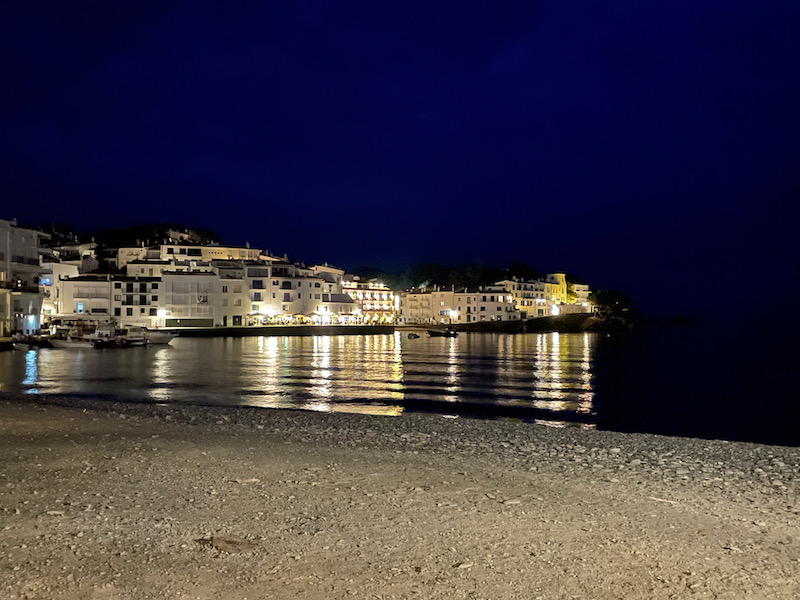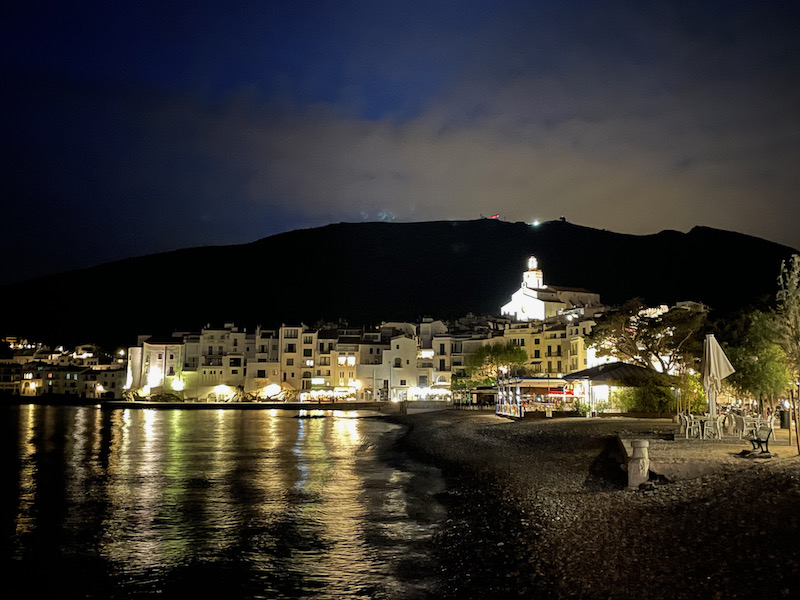Our Blog - Cadaques, Spain
The origin of the place name is Cap de Quers or Cap d'Aques, which translates as Cape of rocks. Known since the 16th century as a fishing location, in the 19th century, salting was famous here. Today, the economy is mostly tourism but also there is an "Anchovy of Cadaqués" which is known. Many artists were here (Dali, Picasso, Joan Miró, Marcel Duchamp). The old quarter, which was walled (the portal is still preserved, whitewashed), occupies a rocky hill on top of which stands the characteristic white church of Santa María, and extends to the sea, to the cove of Llané Grande. A series of narrow and steep streets and alleys, paved with flagstones and slate stones, and small squares form the architectural complex of the old quarter of Cadaqués. In the early 20th century, a large number of inhabitants of Cadaqués travelled or emigrated to Cuba (the figure has been estimated as one third of a village of approximately 1200 people). Many of these immigrants were financially successful in Cuba and returned to Cadaqués where they constructed large and ornate houses. These houses can still be seen in the town (for example; the "Casa Blava", "Blue House" in English). A person returned from Cuba was referred to as an "Americano" among other names.
A few pictures of the drive in first. After exiting the autostrada (the freeway), we ended up on a weavy little road that hugged the side of the hills here. There were a couple turn-off points where I could get pictures of the area and the down to Cadaqués in the distance.
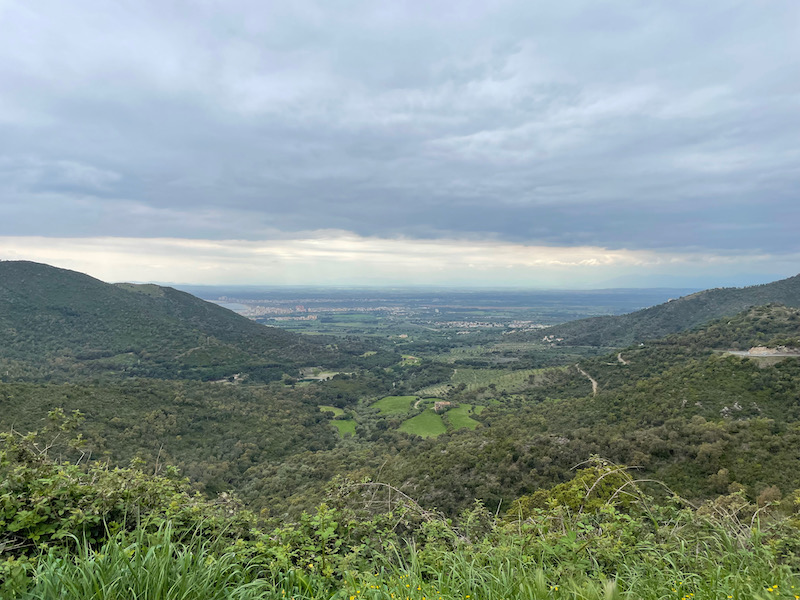
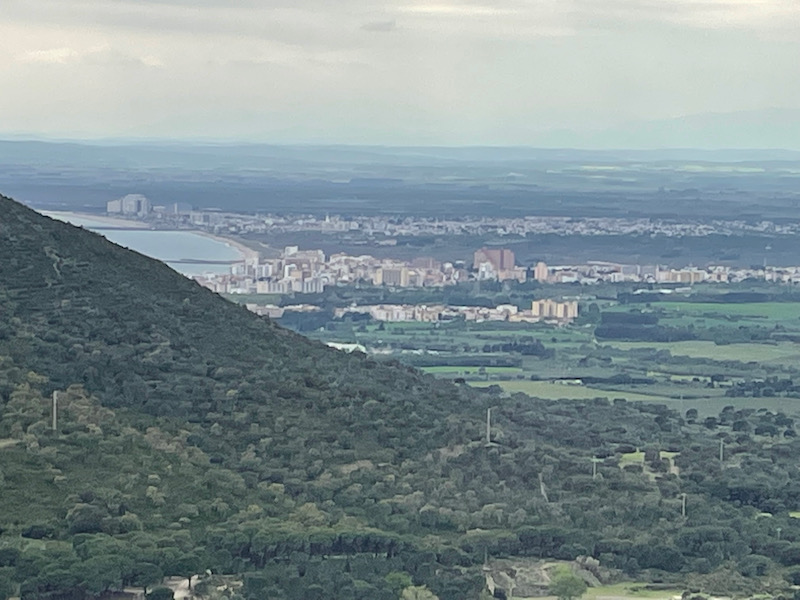
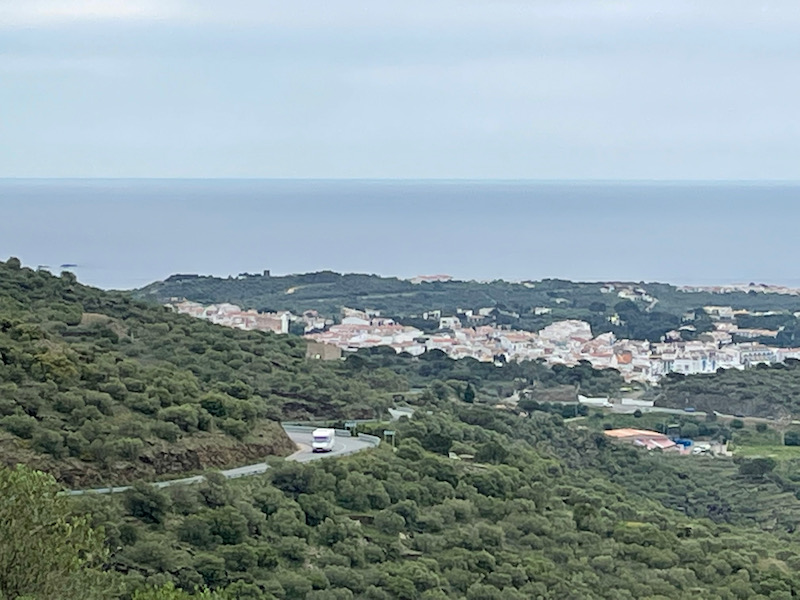
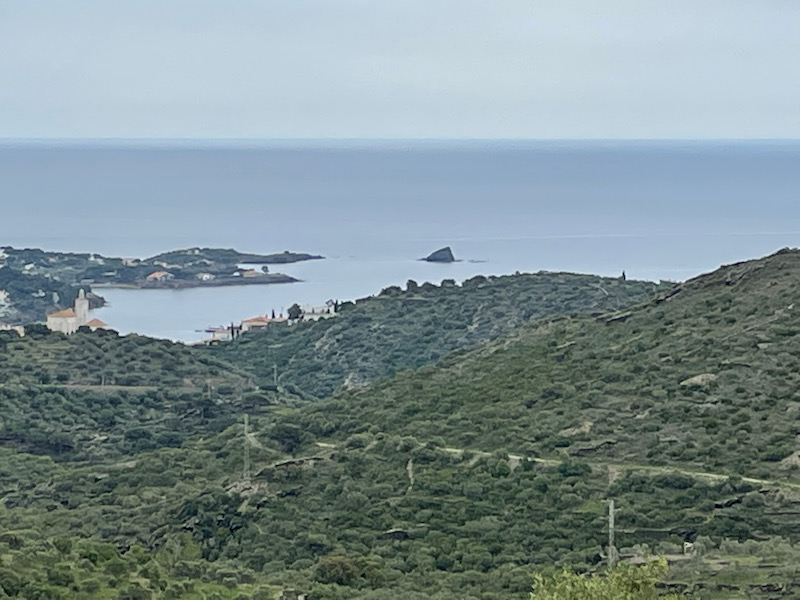
Our hotel was a little bit of a walk from the main part of the town, in the area called Portlligat. It gets its name from the island of Portlligat that is located at the entrance of the bay, separated from the mainland by a narrow 30-meter-wide canal. Both the bay and the island have been represented in several of Dalí's paintings, such as The Madonna of Port Lligat, Crucifixion (Corpus Hypercubus), and The Sacrament of the Last Supper. The very white house across the water is the Salvador Dali House-Museum, which you will see shortly. The last picture of the group shows the 2 hotels that are in Portlligat ... ours is the shorter one nearer the middle of the picture, to the right of the colored canoes (that you can rent in the summer).
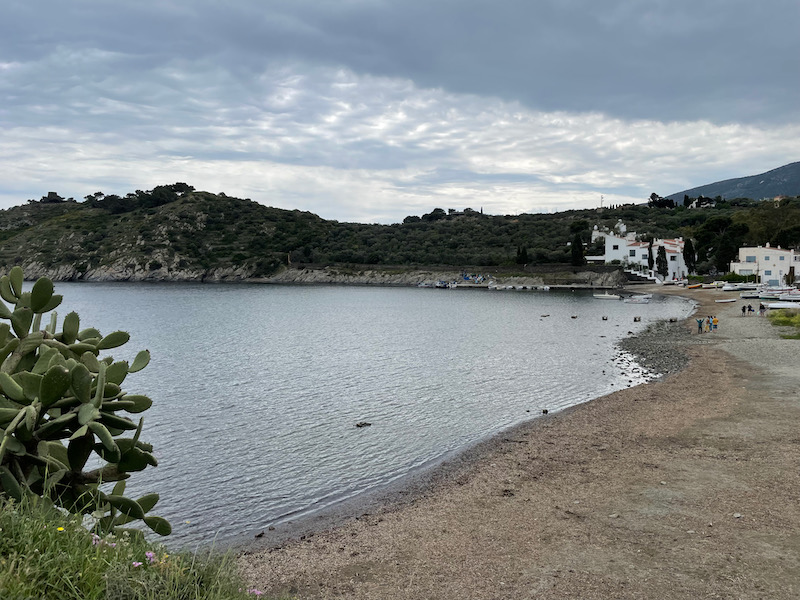
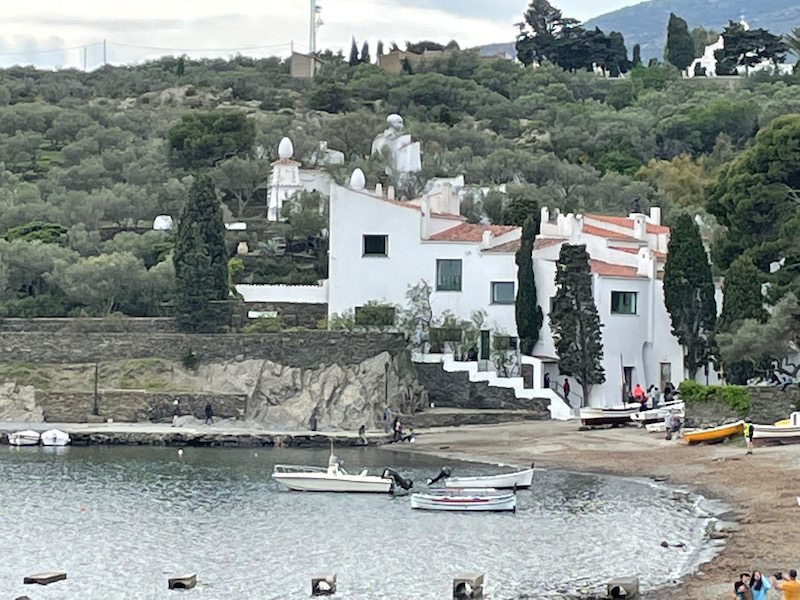
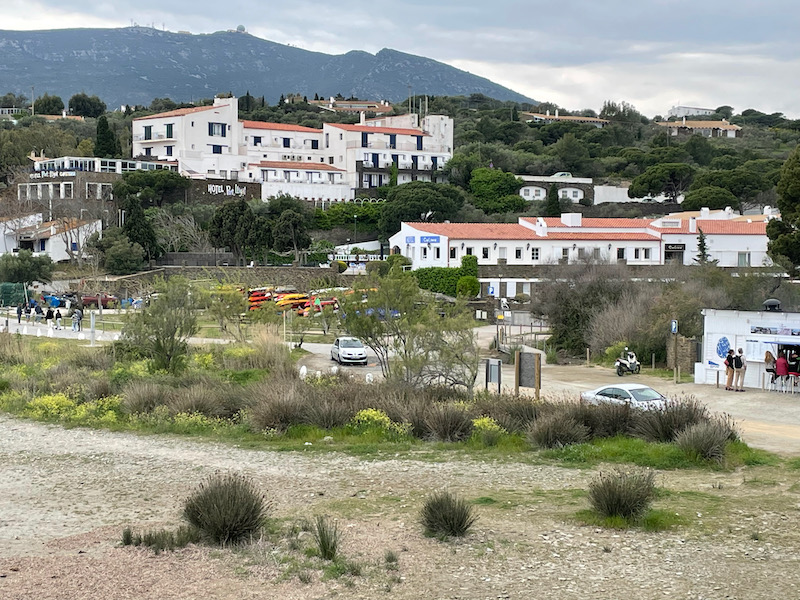
The Salvador Dalí House Museum is one of the most visited places in Cadaqués, and is probably one of the main reasons that we stopped here instead of going directly to Girona. We ended up learning quite a bit about Dali and his wife, Gala. Dali himself was a bit eccentric and he was involved in many different forms of art, including graphic arts, film, sculpture, design and photography, as well as writing fiction and poetry. Major themes in his work include dreams, the subconscious, sexuality, religion, science and his closest personal relationships. He is probably just as known for his public behavior and public support of the Franco regime as he is for his artwork. Gala Dali was born and raised in Moscow. She contracted tuberculosis and went to Switzerland for treatment, where she met her first husband, Paul Éluard, a French poet and one of the founders of the Surrealist movement. In 1929, the couple traveled to Spain to visit Dali, an up-and-coming Surrealist painter. Despite a 10-year age difference (Gala is older), an affair started which ended her marriage to Éluard. She married Dali in 1934 and was Dalí's muse, directly inspiring and appearing in many of his works, until her death here in 1982.
I use the term "eccentric" to describe him ... Dalí frequently traveled with a pet ocelot (a medium-sized spotted wild cat), even bringing it aboard a luxury ocean liner. He was also known to avoid paying at restaurants by doing a drawing on the checks that he wrote. His theory was the restaurant would never want to cash the check as it was such a valuable piece of art (... he was usually correct).
The house in Cadaqués started out as a set of fishermen's shacks that he bought in 1930. He continued to buy additional shacks and add on to the property, and connecting them together makes it a little bit like a maze. If you scroll back up a few pictures to look at the one of the house, you can somewhat see this with all of the various little roofs at different levels. Each time he added to it, he personally designed the space, including a room for Gala that is in the shape of a sea urchin. We start with the dining room and library, complete with his pet swans stuffed (you can see a picture of them when they were alive as well).
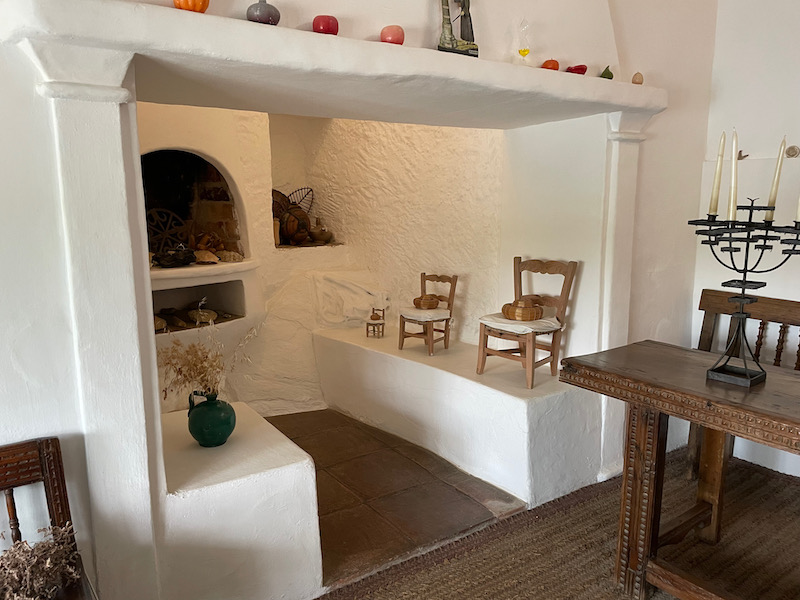
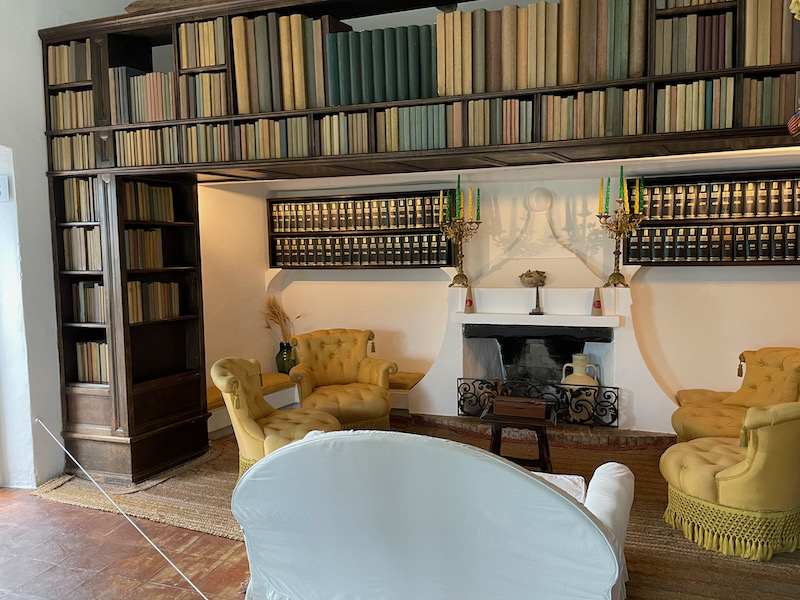
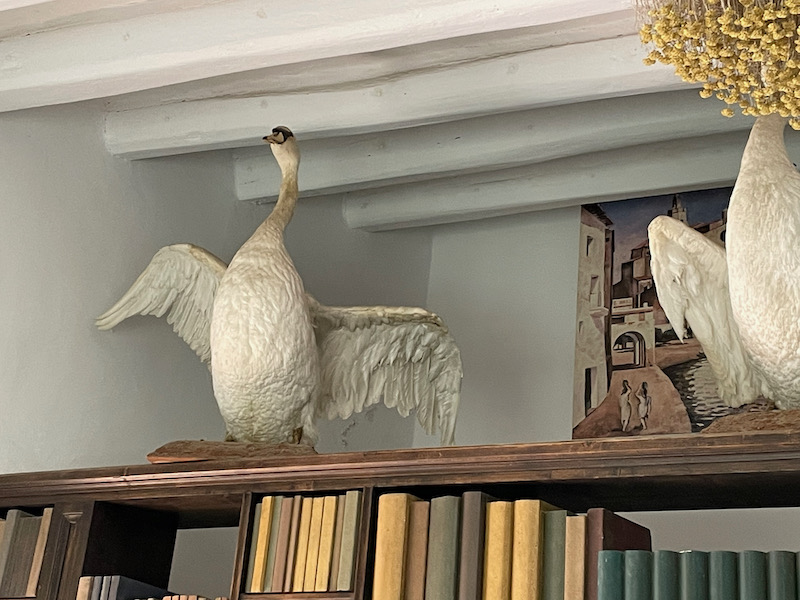
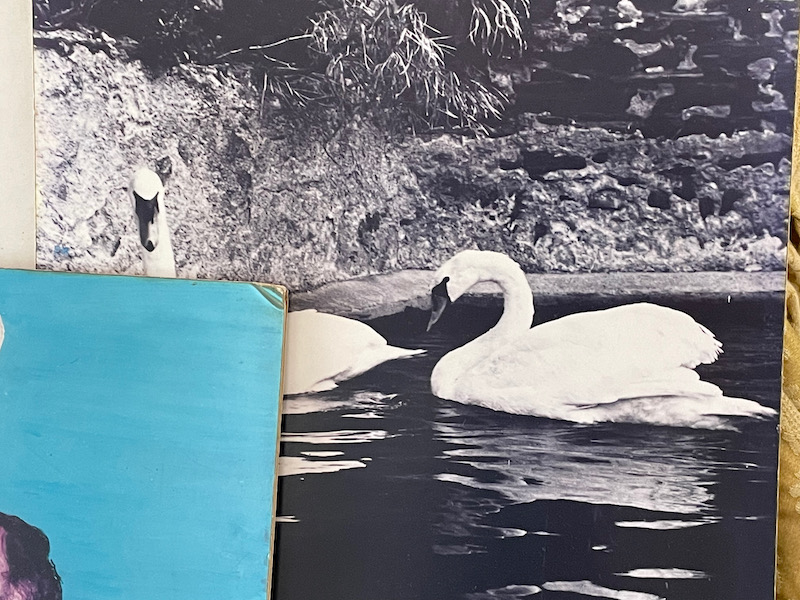
He had a terrace just off the library, and you can see how the house is built into the rocks (even though the rocks are painted white as well).
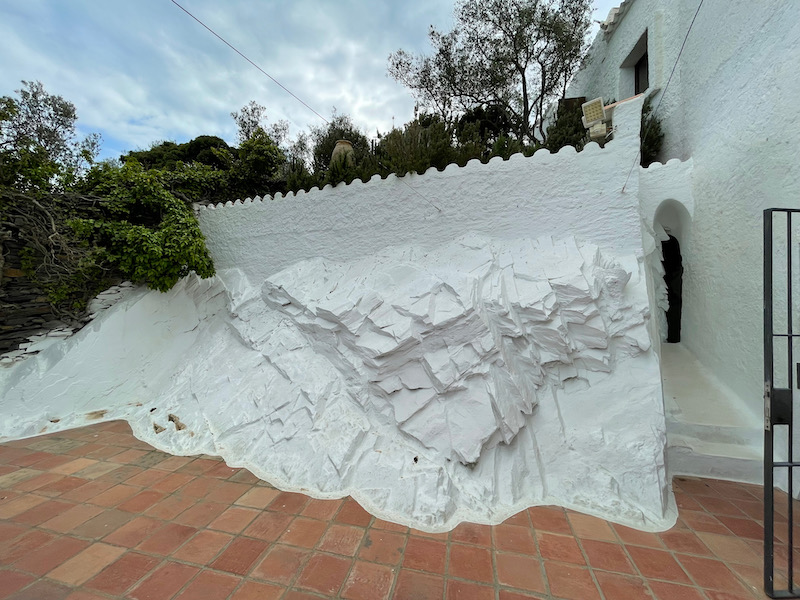
Then we visited the studio, which he had designed and created when he bought an adjoining shack. There are a couple of his paintings here that are unfinished. One really interesting note here ... he always painted sitting down in the white chair. The easel is especially designed so that he can raise and lower the canvas that he is working on ... so he doesn't move up and down to paint, the painting moves up and down as needed. The two windows brought in lots of light, and even gave him a great view if he wanted to paint the bay.
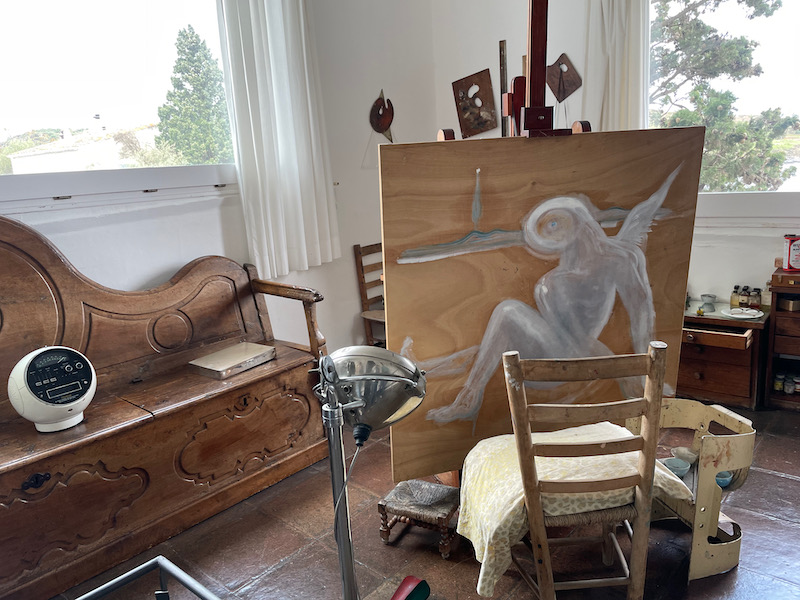
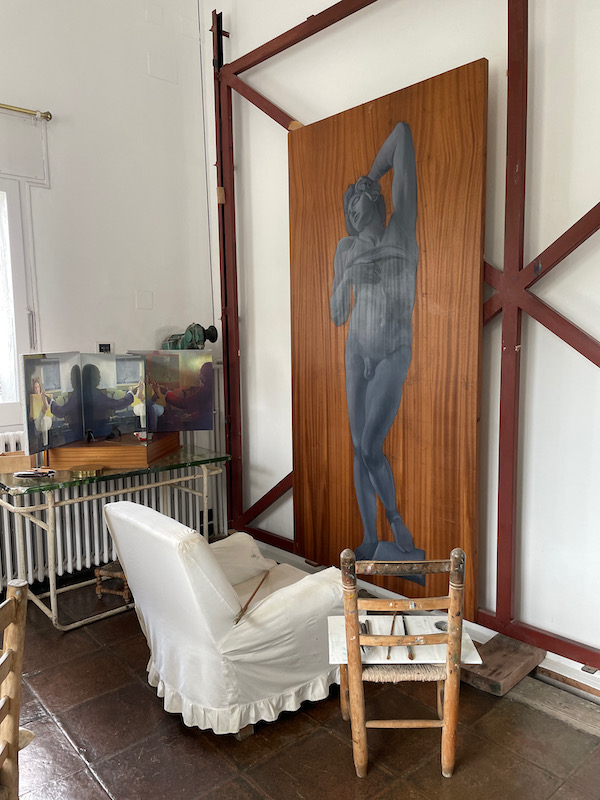
The yellow salon is a bit interesting for 2 reasons. The first is that it has a mirror (with the black frame) that is positioned precisely so that the artist could see the dawn from his bed and thus be the first person in Spain to see the sun rise, since this is the easternmost point of Spain. Secondly, Gala loved to plant a shrub called an "Immortal", which has yellow flowers, in her garden along with rosemary and lavender. She would dry them and make sculptural bunches to hang from the walls and frame windows.
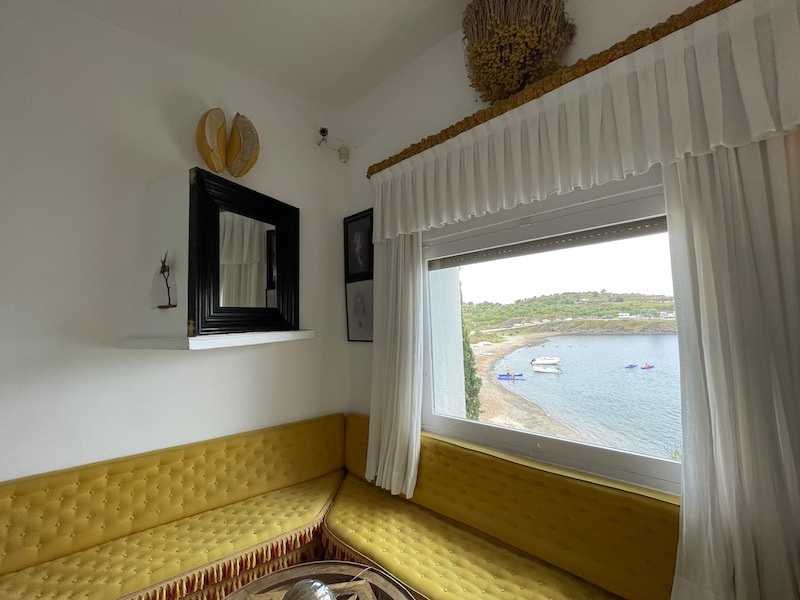
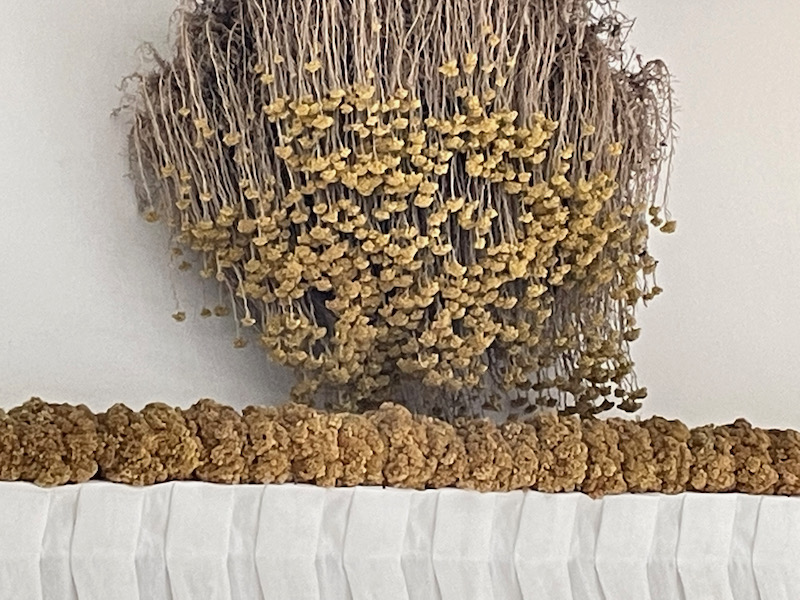
This room is called the Bird's room with the 3-story bird cage. But if you look at the wall behind it, you will see a little brown blob ... that is a cricket cage. Supposedly he kept a cricket in there because he liked the sound that it made. Up the stairs is the bedroom, where he could lay and see the sunrise, with a very interesting round design feature on one side of the room.
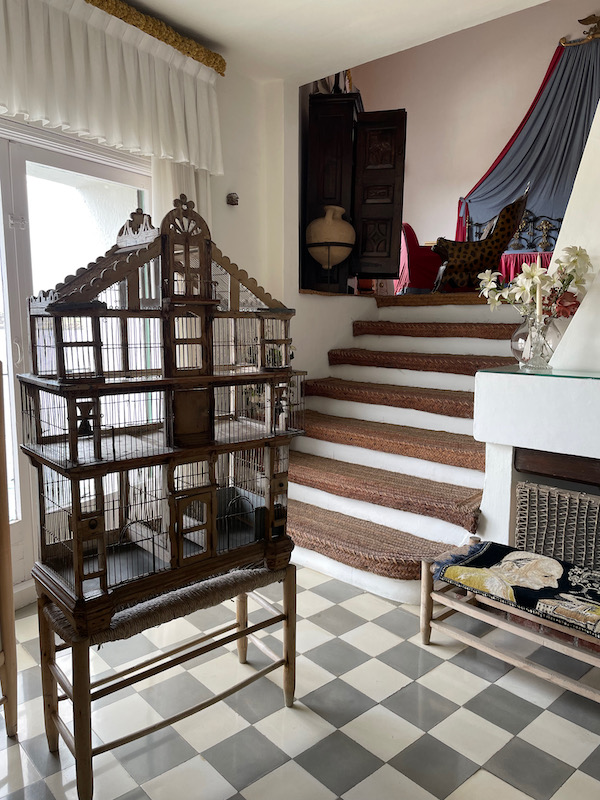
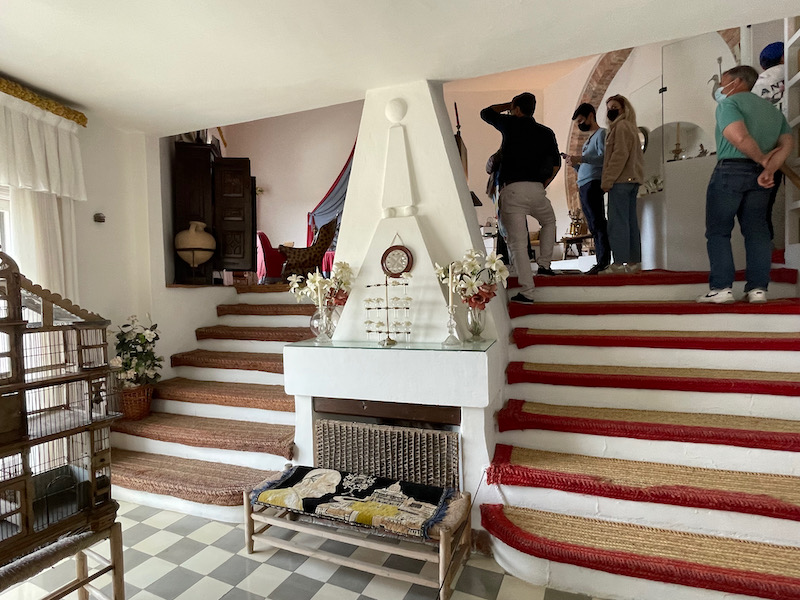
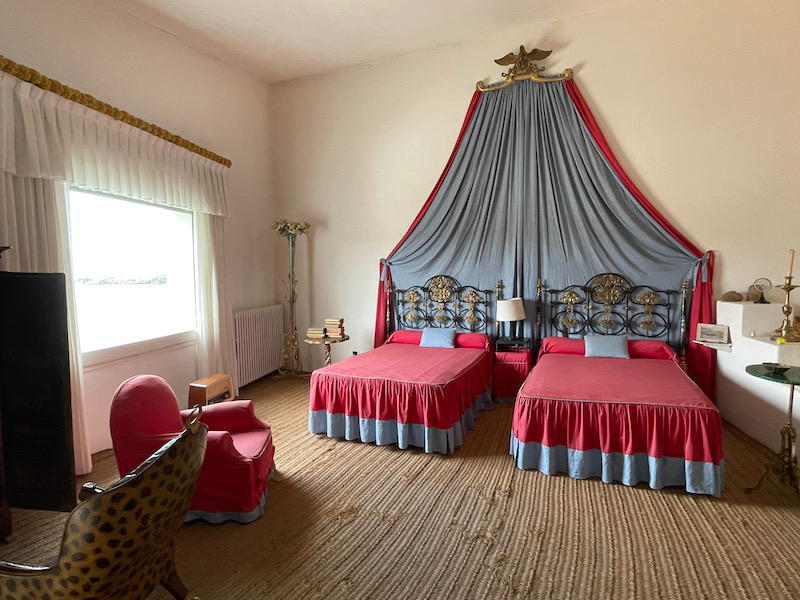
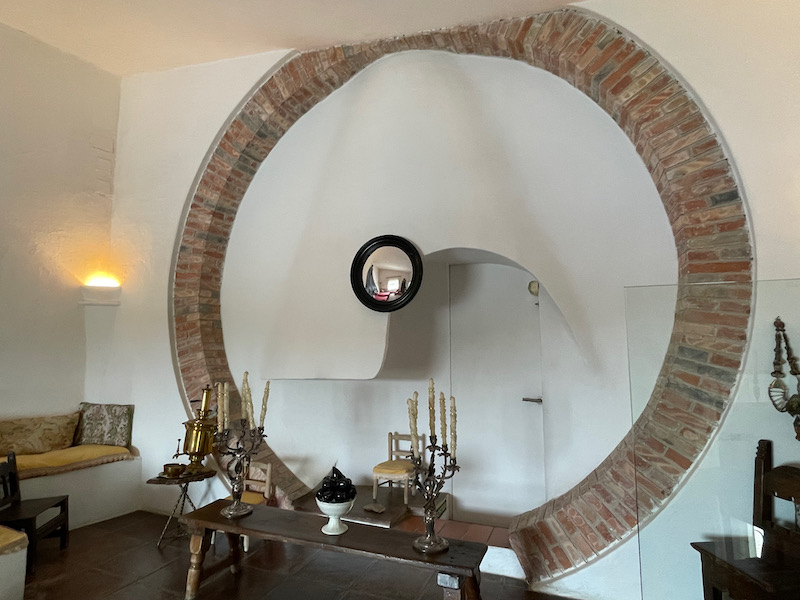
This is the round room, shaped like a sea urchin, that Dali had built for Gala. He considered the form of the sea urchin to be among nature’s most perfect creations.
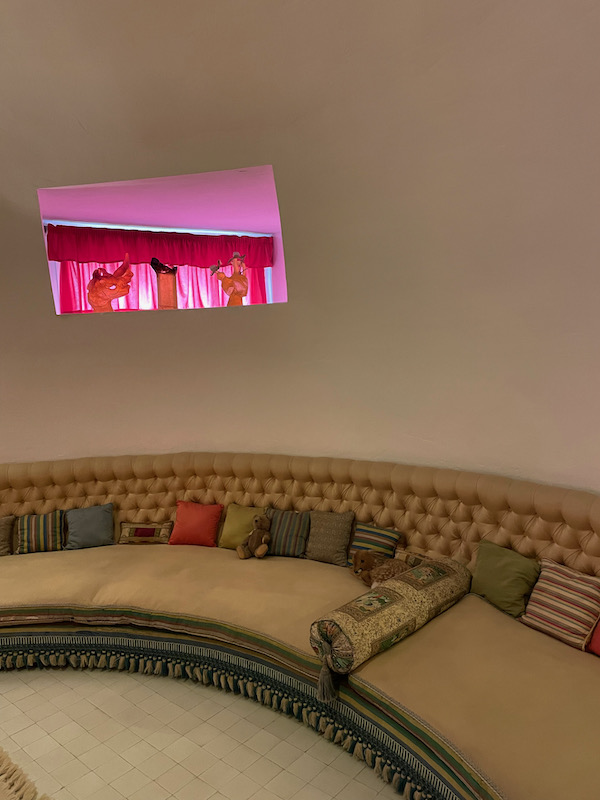
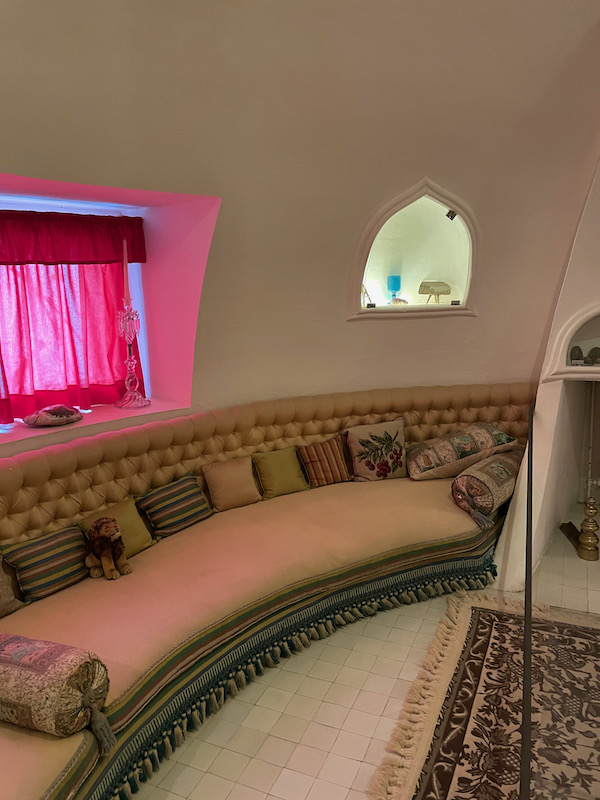
The dressing room was interesting only because of all of the pictures of Dali with famous people that Gala had put up on the doors.
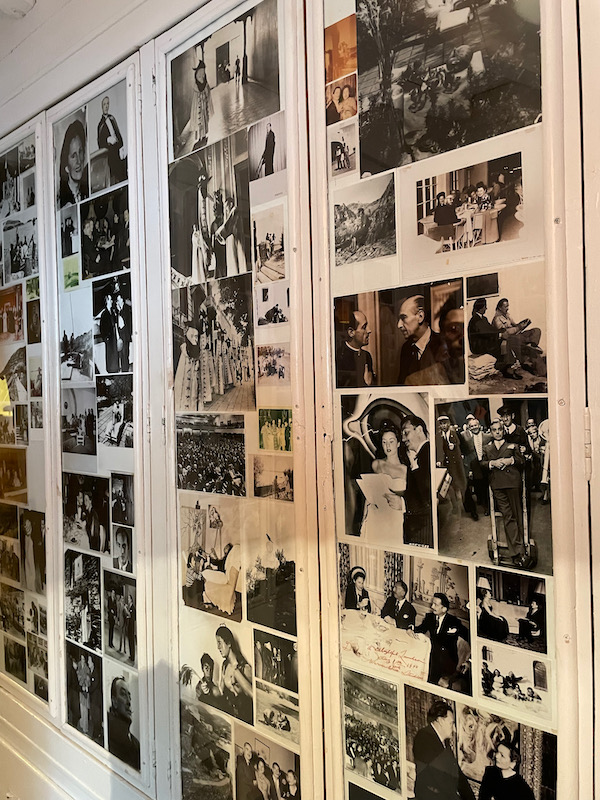
Then outside to the terraces and olive garden. Looking out over the bay, there is a little building with an egg on top (no clue why). Then the swimming pool with swan fountains along the sides and a lip-shaped seat surrounded by Pirelli tire decorations
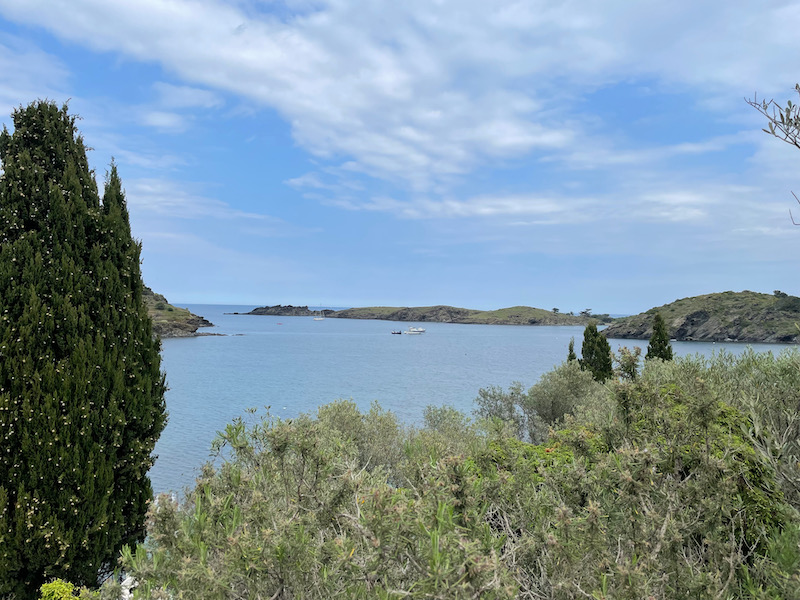
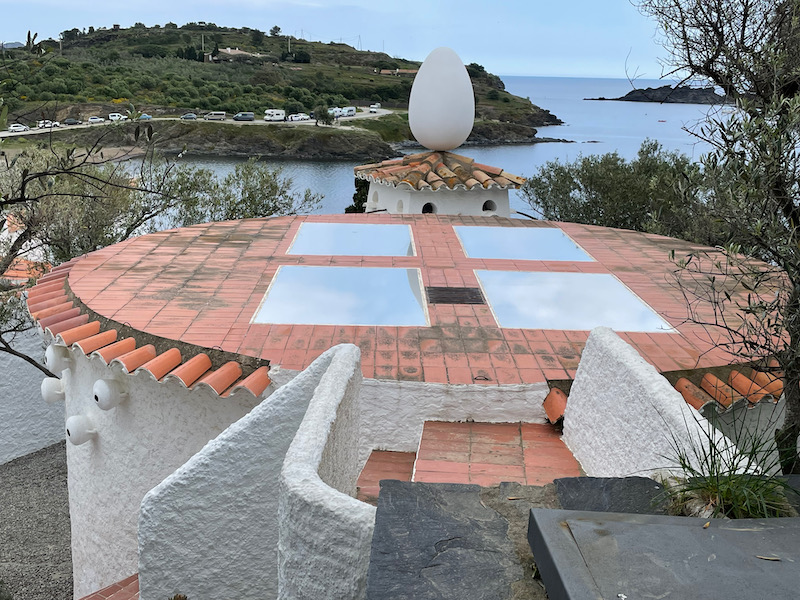
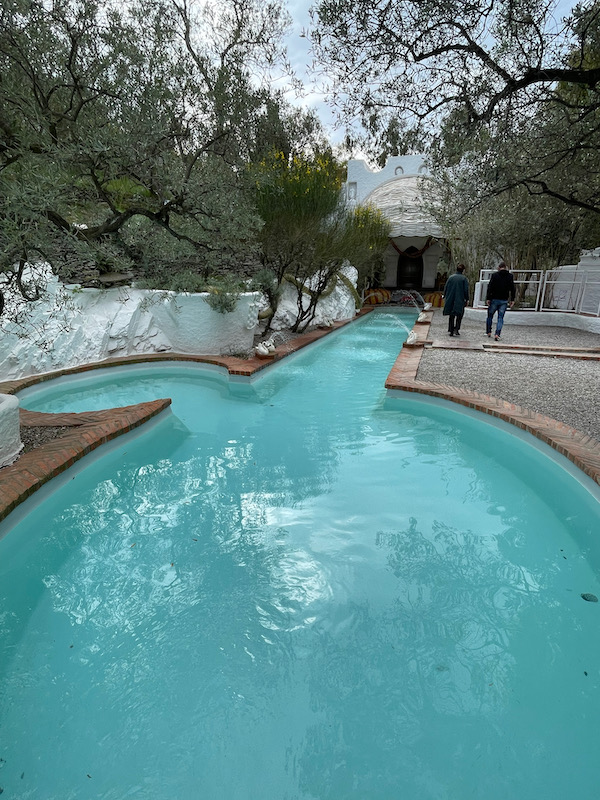
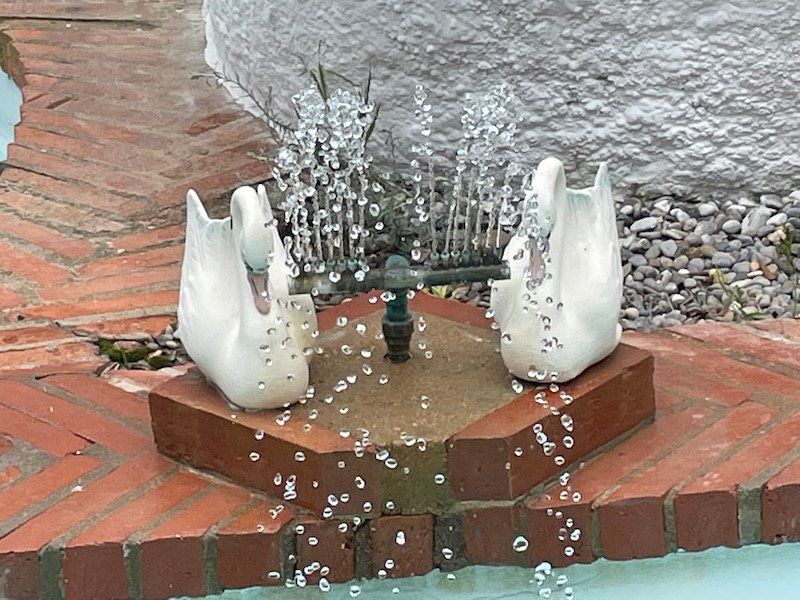
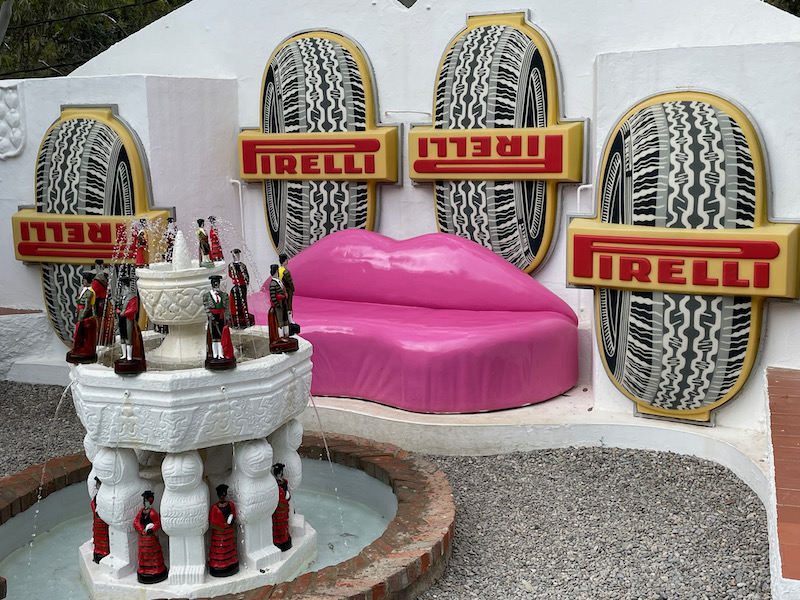
You probably noticed that there wasn't much art in the house. The only 2 paintings from him were the 2 unfinished ones in the studio. Most are either in museums (or private collections) around the world, or in the main museum in Figueres where the artist was born. So I thought I would go find a few of his most interesting works (for me) and give a bit of information on them that I found on the web, placed in chronological order.
Just after meeting Gala, he painted "The Great Masturbator" in 1929. The painter had said that he was a virgin before meeting Gala and the painting is thought to reflect the erotic transformation that the artist underwent due to her arrival in his life. The main yellow area represents the artist himself sleeping. Out of his head comes a nude female figure resembling Gala, almost kissing what looks to be the male genitalia (presumably Dali's). Many art specialists see this as a bizarre self-portrait, which I may be able to partly see ... but then I'm a bit confused about the additions like the fish-hook (to the left) and the grasshopper which has attached itself under his face.
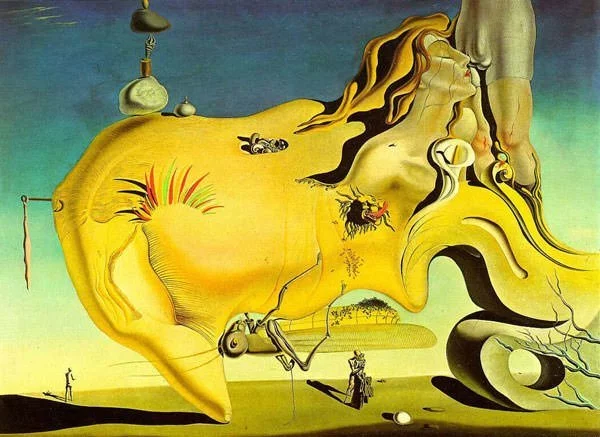
The one that I most often think of when I think of Dali is this one, "The Persistence of Memory", done in 1931. It is probably his most well-known works of art. The scene has watches melting slowly on rocks and the branch of a tree, with the ocean (or maybe Portlligat) in the background. It has been analyzed over the years to try to interpret the painting since Dali never explained it. One thought is that the melting watches and rocks to represent the soft and hard aspects of the world, respectively, like the human mind moving from the softness of sleep to the hardness of reality. Another thought is that the melting watches are an unconscious symbol of the relativity of space and time; as a symbol of mortality with the ants surrounding the watches representing decay; and as irrationality of dreams.
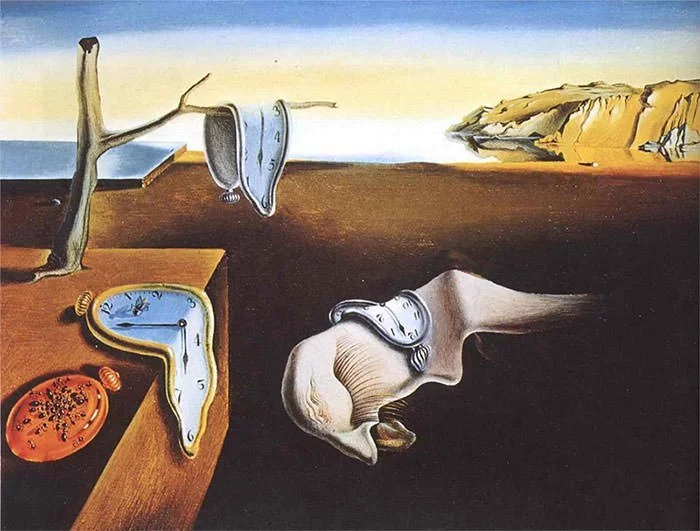
Lastly, his 1952 painting entitled "Galatea of the Spheres", which to me shows his change in style between his earlier works (of 1929 and 1931) and this one. After the atomic bombings of Hiroshima and Nagasaki, Salvador Dali became captivated with nuclear physics and the theories of disintegration of the atom. He did a number of paintings during this time, called his Nuclear Mysticism period. Since matter is made up of atoms, Dali shows the image of his wife and muse, Gala, appearing to disintegrate into multiple atoms. Her face is composed of densely populated spheres, representing atomic particles. Galatea in the title refers to a sea-nymph in Classical Mythology who was renowned for her virtue.
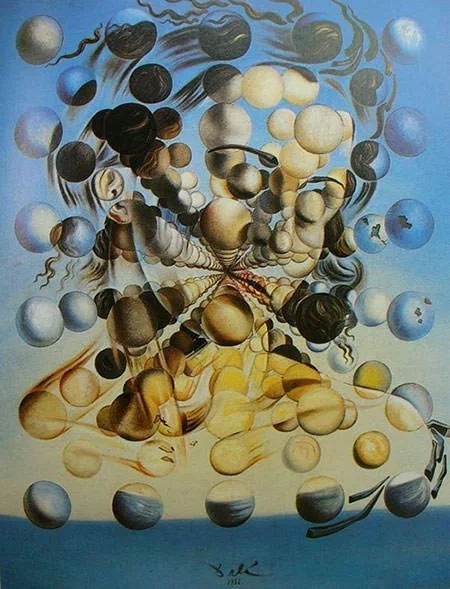
After Gala died in 1982, Dali left Cadaqués and moved to a castle in Púbol that he had bought for Gala in 1968. He lived there until his death in 1989. An interesting piece of trivia: his body was exhumed in 2017 as part of a paternity suit. The DNA tests revealed that he was not related to the claimant and in 2020, a Spanish court ordered her to pay the costs for the exhumation.
We then headed down to the historical town. Along the way, I grabbed another picture of the bay along with two silver heads on top of a roof at the Dali house, which we hadn't seen before. The town is also on the water, with lots of water sports available during the summer. Here you can see the town across the bay with the Church of Santa Maria at the highest point.
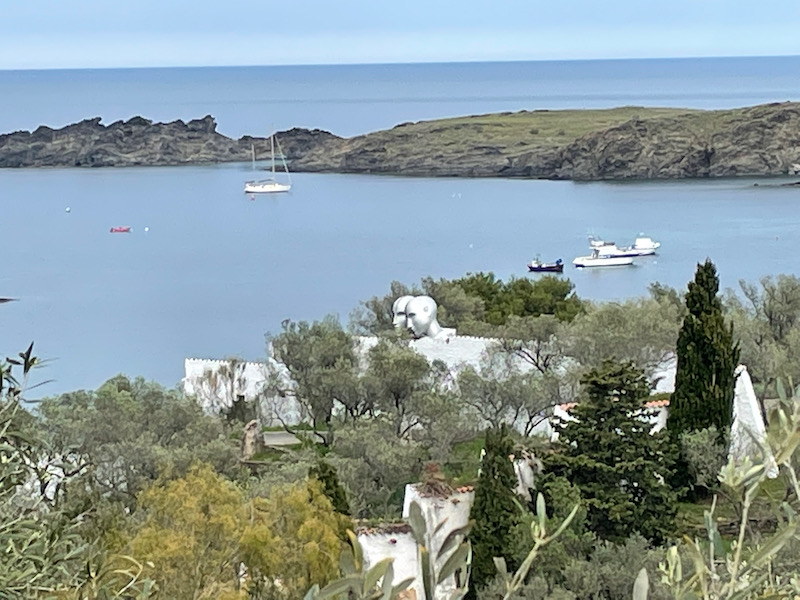
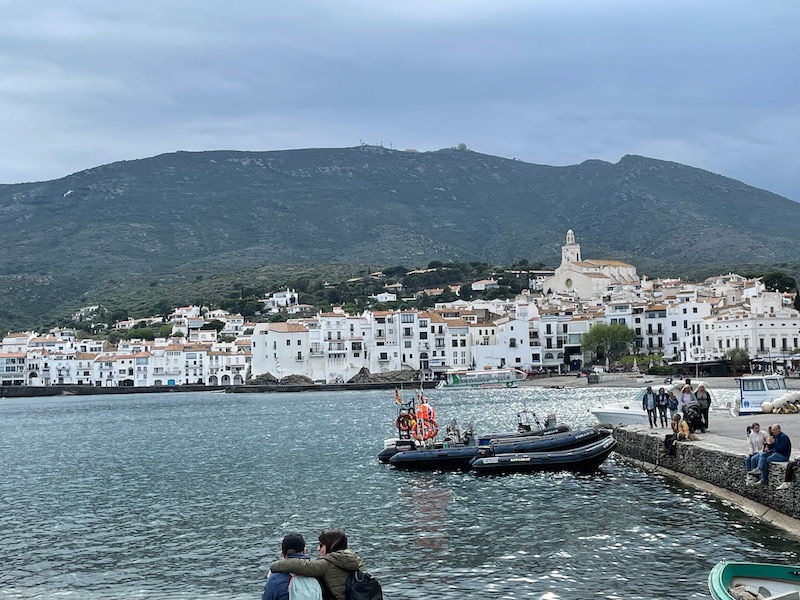
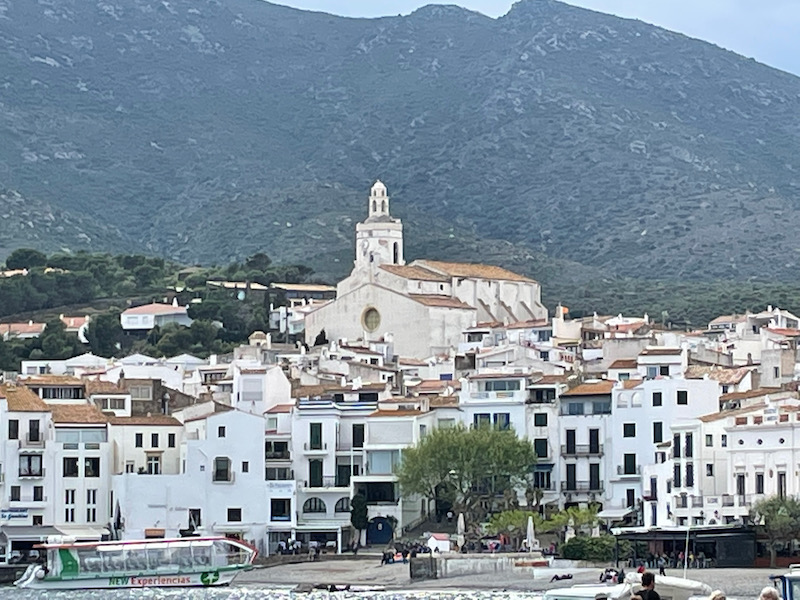
In the early 20th century, a large number of inhabitants of Cadaqués travelled or emigrated to Cuba (the figure has been estimated as one third of a village of approximately 1200 people). Many of these immigrants were financially successful in Cuba and returned to Cadaqués where they constructed large and ornate houses. The Serinyana family had a history of being good seafarers and merchants from the 16th to the 19th centuries. In 1913, Octavi Serinyana had this modernist house built, with an almost absolute predominance of sky blue. On the façade, the sky blue glazed ceramic decoration stands out; friezes, balustrades, framing of openings and wrought iron elements of grilles and balconies. A bit of trivia: it was restored in 1980 and in 2019, it was put on the market for a mere 22 million euros!
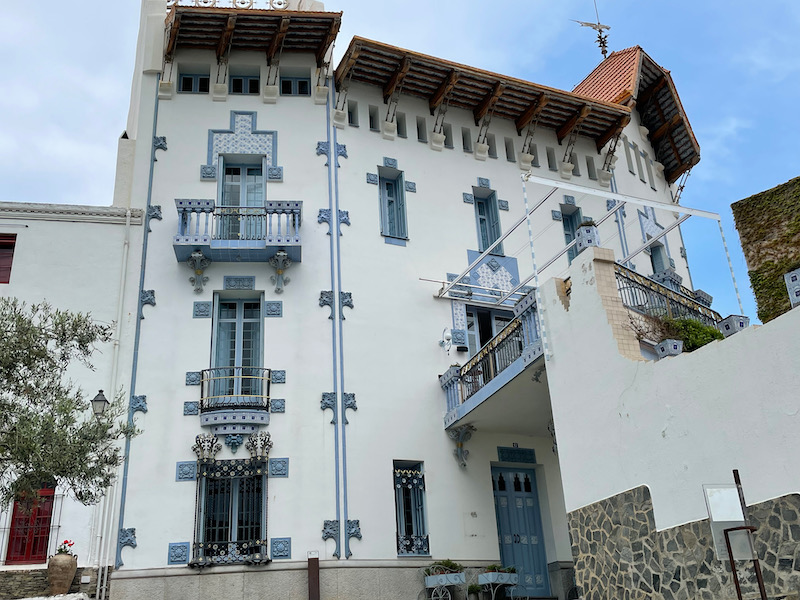
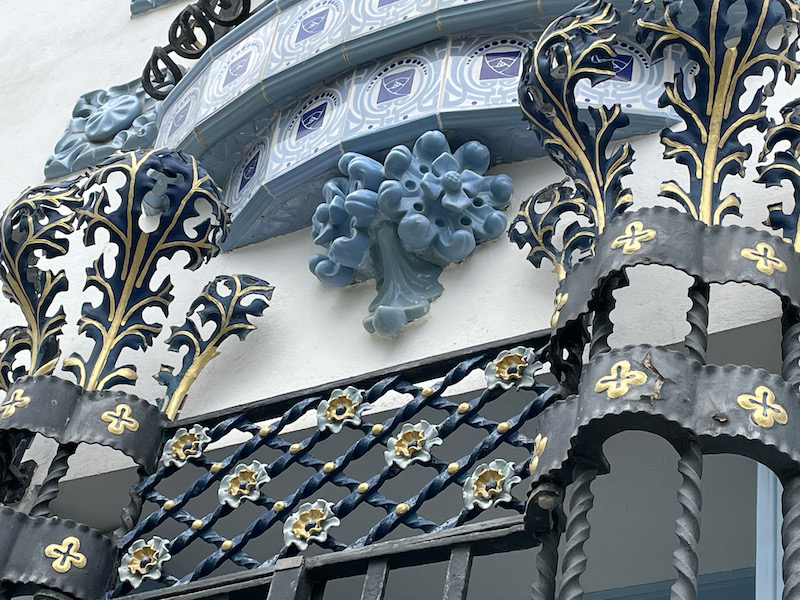
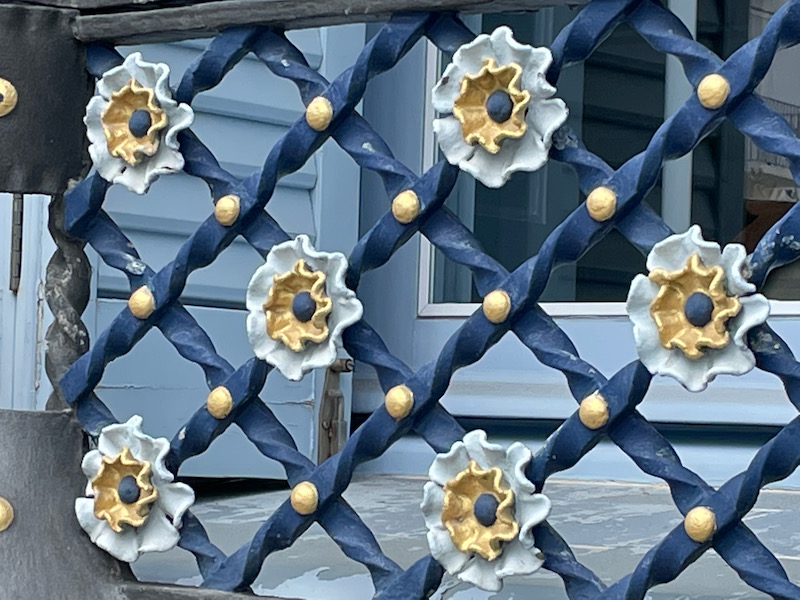
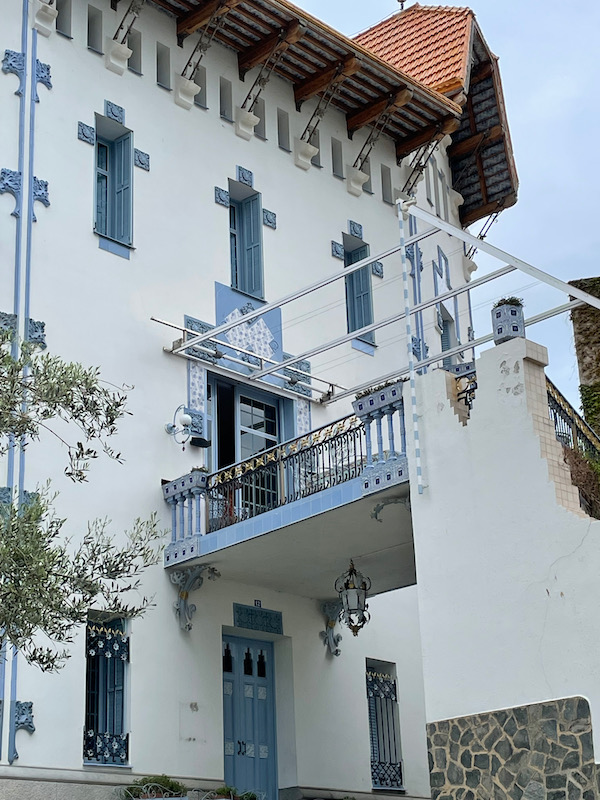
A few other very nice buildings.
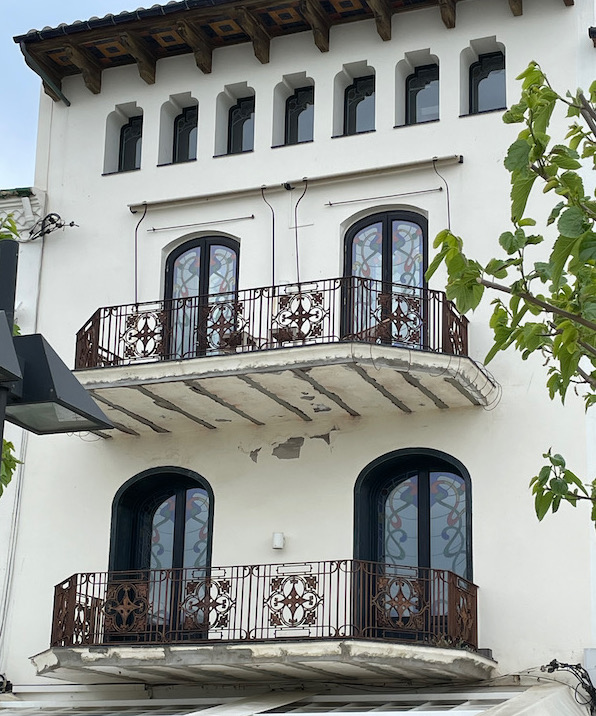
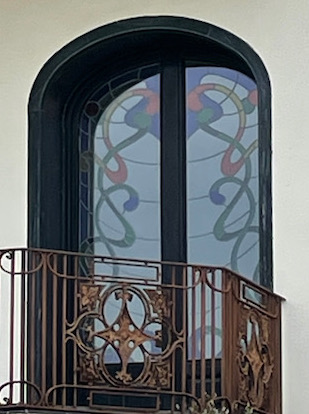
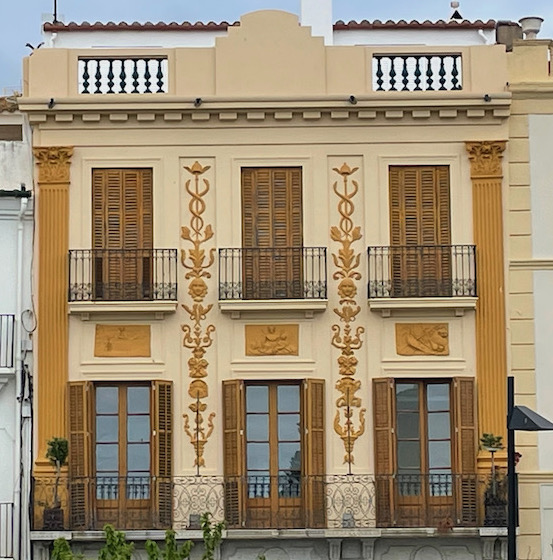
The old center is made up of a maze of little cobblestoned alleyways.

The church of Santa María is the parish church of Cadaqués. It was built in the 16th century in the center of the town, at the highest point of the old town, surrounded by narrow streets. You will notice that I have no pictures of the outside of the church, for 2 reasons. First, it is really difficult to get a picture of just the church because it is right in the middle of the old town. Secondly, it is just not that nice looking! However, you can get an idea of it from the pictures above: painted white with a bell town that has a square base and octagonal top. The really nice things are inside! You can see that the interior is very much Gothic, with the pointed arches and ribbed vaults. But the various altarpieces are purely Baroque.
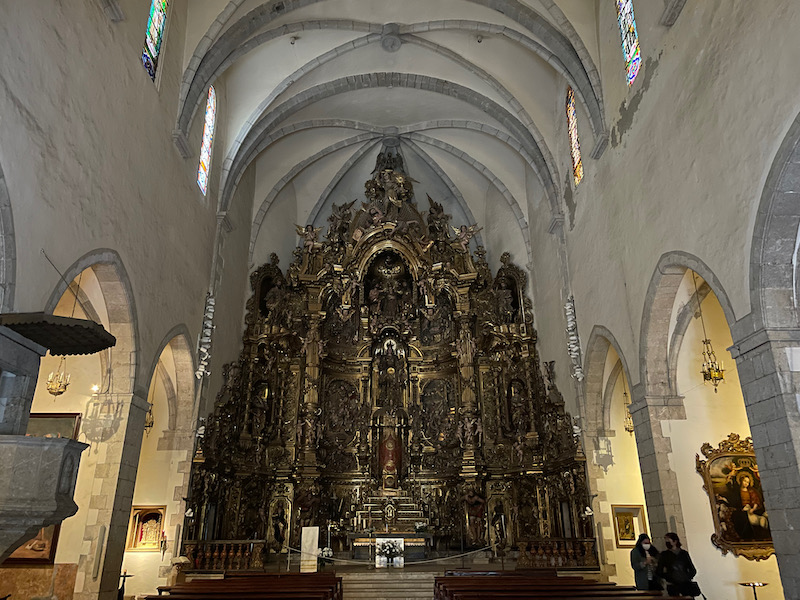
This set of paintings are from the 16th-century, making up the Altarpiece of Saint Baudelius (Sant Baldiri). Next to it is a sculpture of Saint George slaying the dragon.
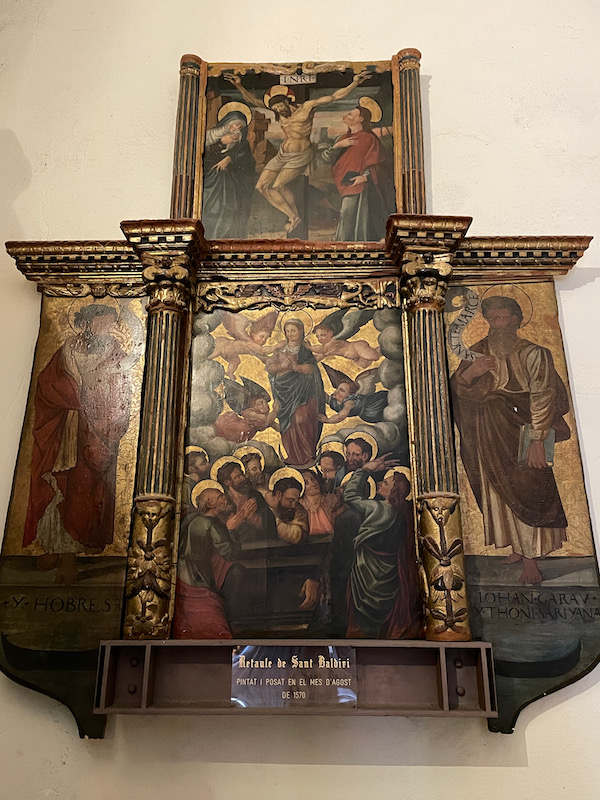
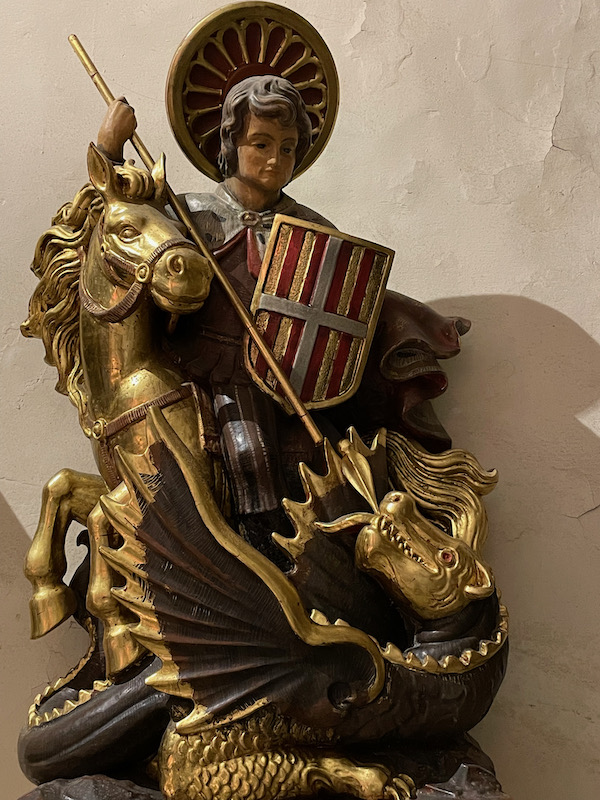
Retaule (Altarpiece) de Sant Isidre i de la Mare de Déu de Montserrat is dedicated to Isidore, the patron saint of farmers (at the top of the altarpiece), and to Our Lady of Montserrat (the Black Madonna at center). This is one of the more colorful altarpieces and dates from 1718.
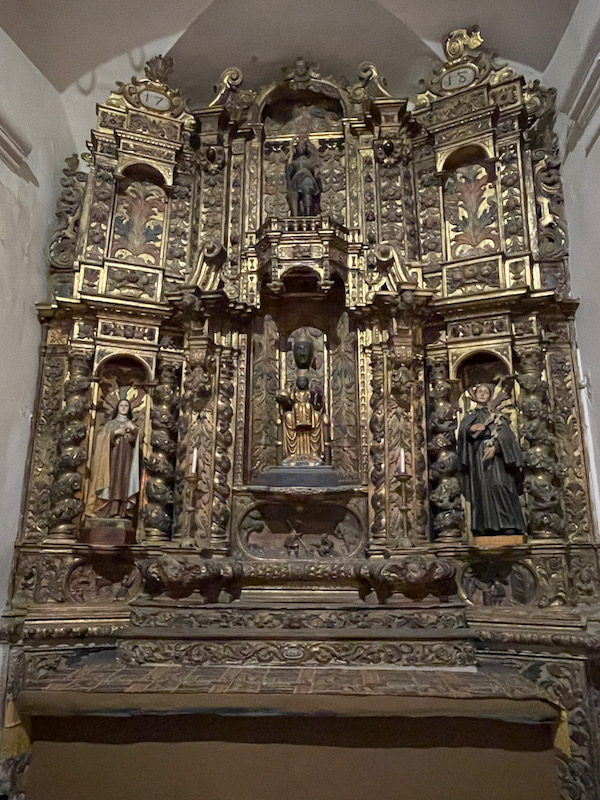
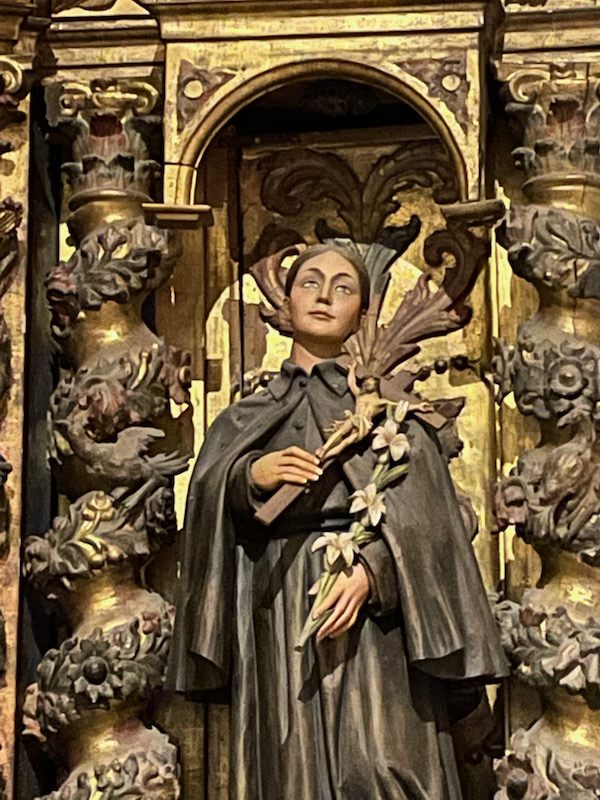
The organ sits on a side wall instead of above the main entrance, where instead is a statue of the Virgin Mary framed by stained glass windows.
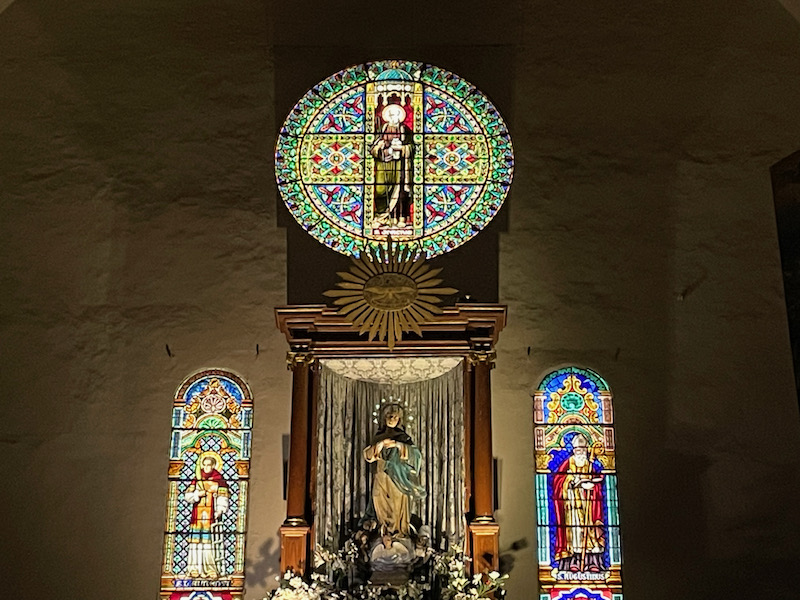
Retaule de Sant Sebatià is one of the smaller altarpieces. It dates to the late-17th century and is dedicated to Saint Sebastian, depicted at center impaled by arrows.
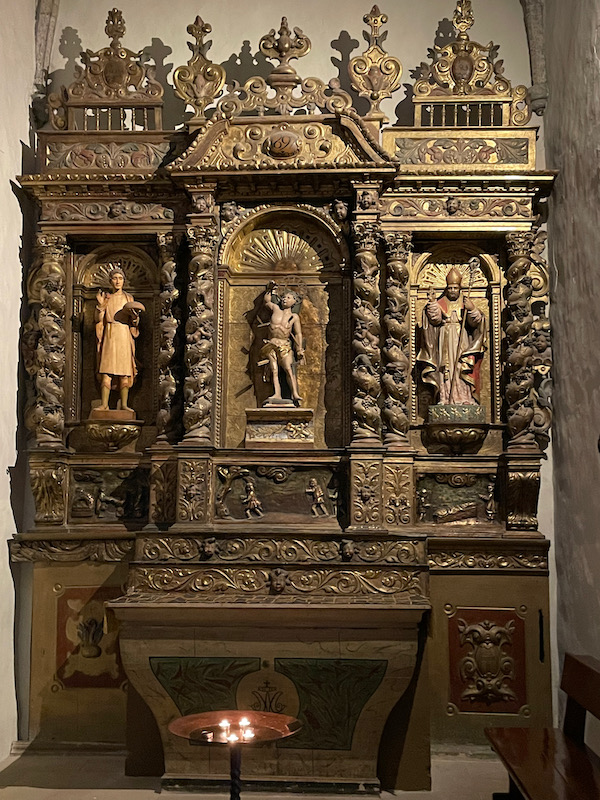
The Retaule de Sant Pere was constructed in the mid-17th century and features several statues with the central figure being Sant Pere (Saint Peter). It is another colorfully-painted altarpiece.
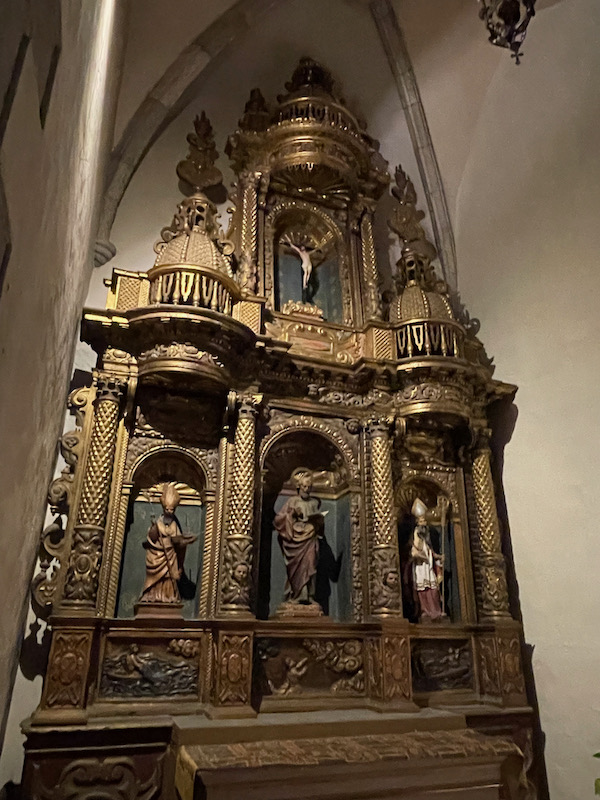

Now the 18th-century main altar, one of the most noteworthy Baroque altarpieces in Catalonia. The pictures are a little dark as the light wasn't working when I tried to illuminate it. It has a statue of Our Lady of Hope in the middle, with several scenes of Mary around it, and is crowned by a statue of Saint Thomas. On the base we can see Saint Barbara, Saint Rita, Saint Peter and Saint Paul. One of the most unique parts is the decorative pillars supporting the altar, depicted as brawny fishermen.

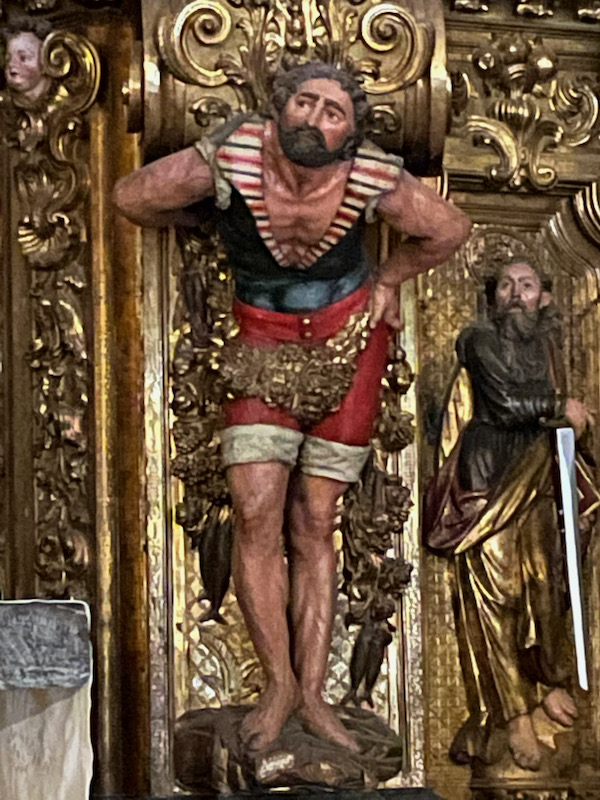
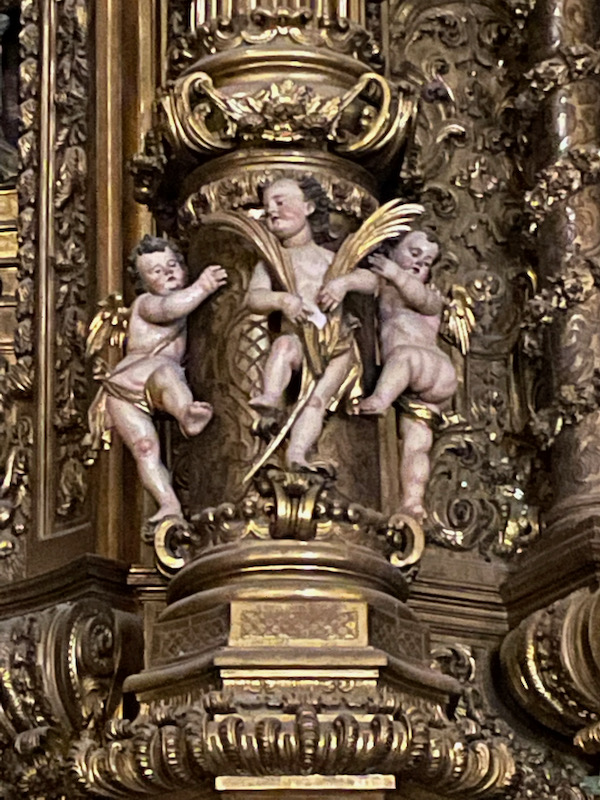
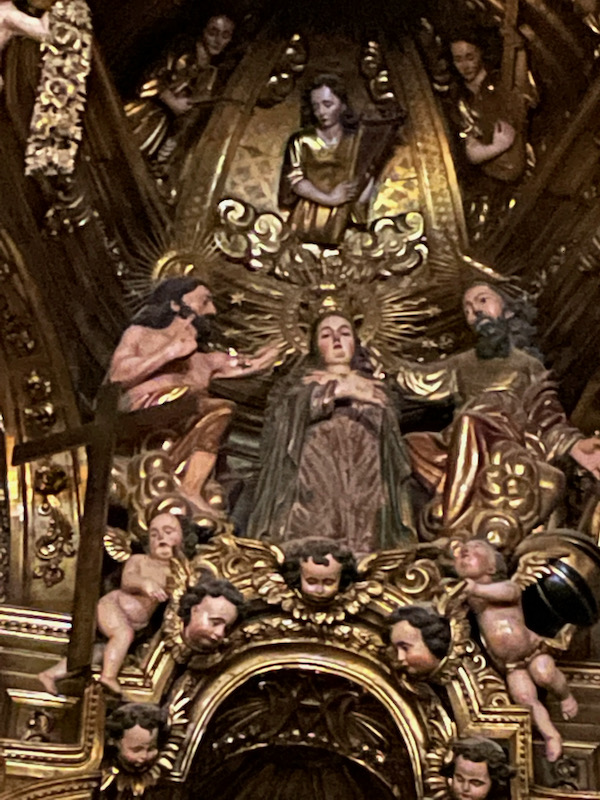
This was my favorite sculpture, coming from the Altarpiece of Saint Anthony of Padua (although I didn't get a picture of the whole altarpiece).
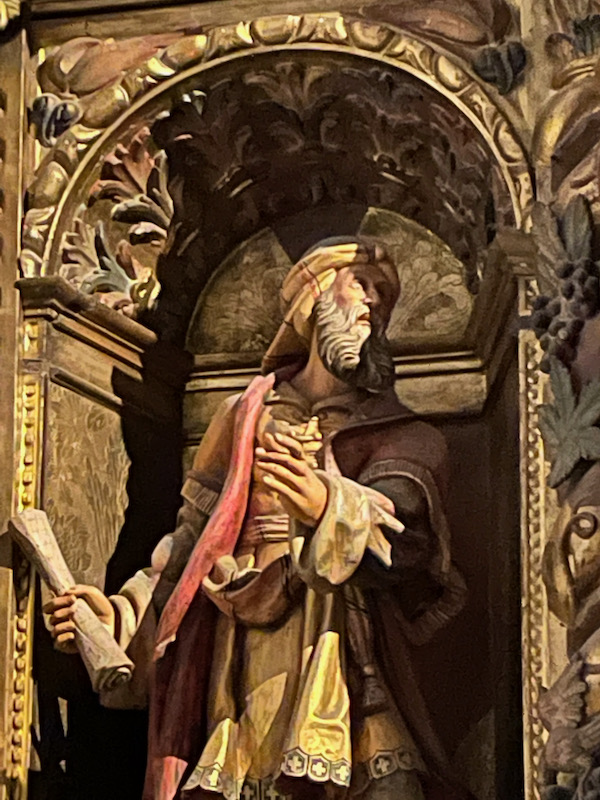
I don't always include meals, but tonight we ate at a little restaurant off an alleyway in the old quarter, and it was really delicious. We ordered the fisherman's stew, which had various types of fish and shellfish, along with potatoes. Then we finished it off with a piece of chocolate cake and the house special dessert, called "La Sirena", which was ice cream with basil oil and tomato marmalade.
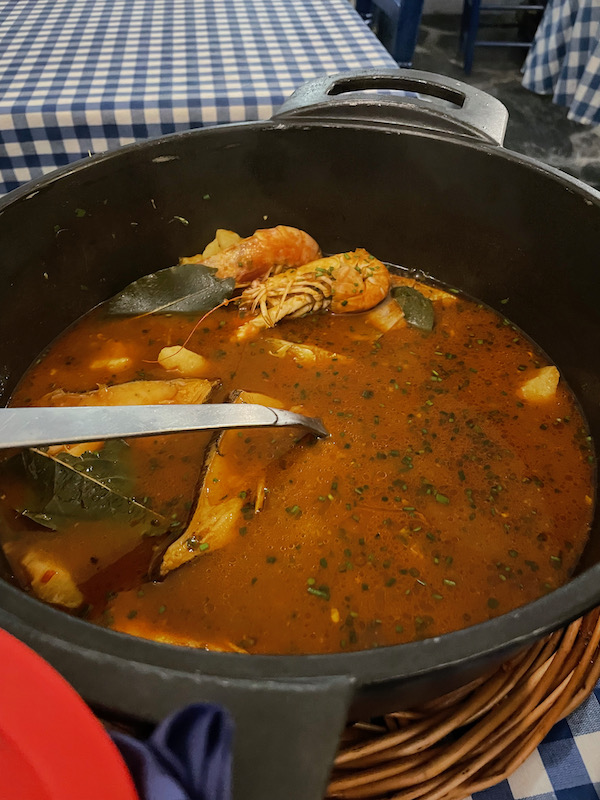
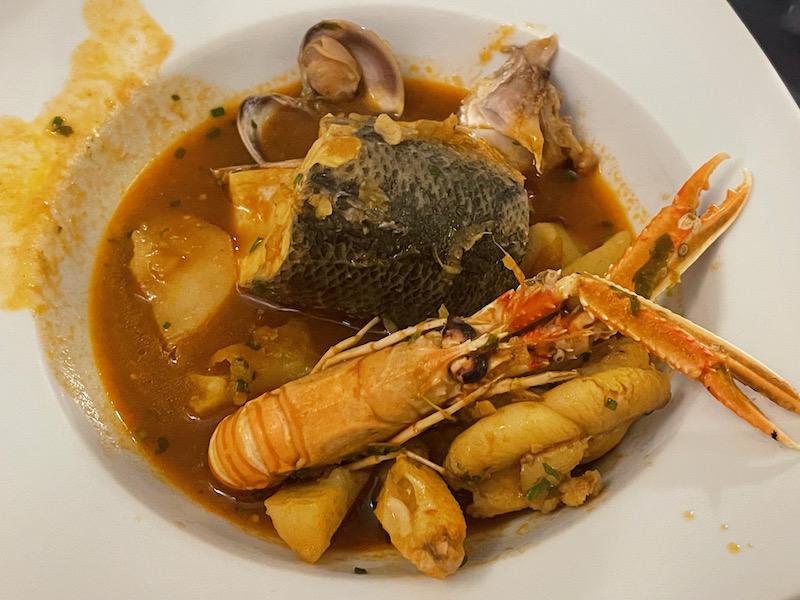
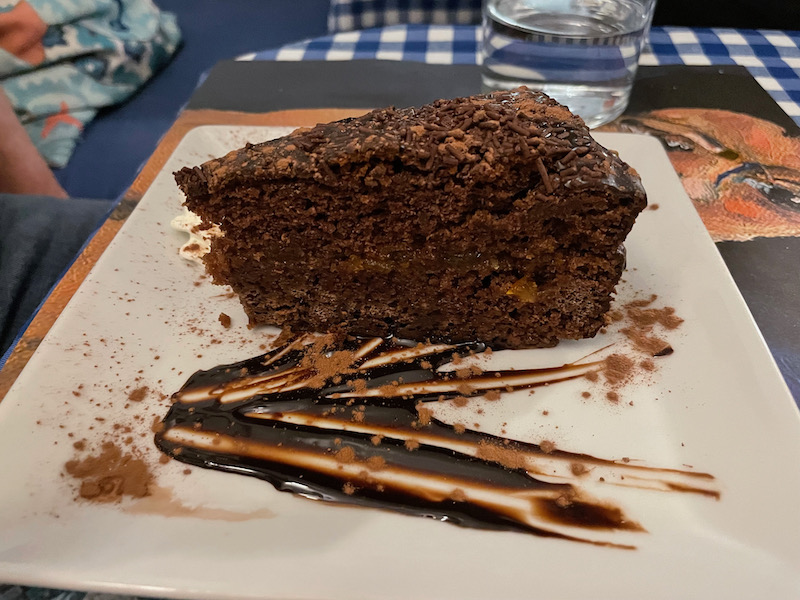
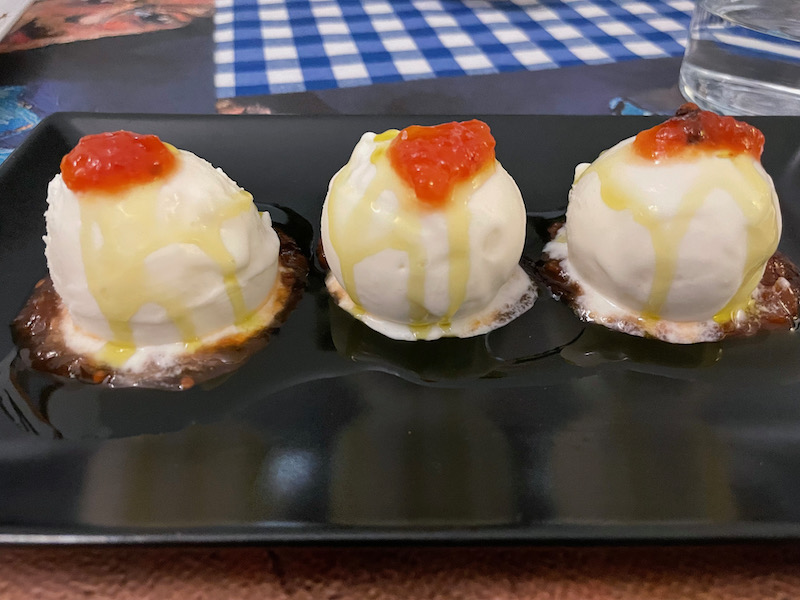
And a couple views at night to finish off the blog.
